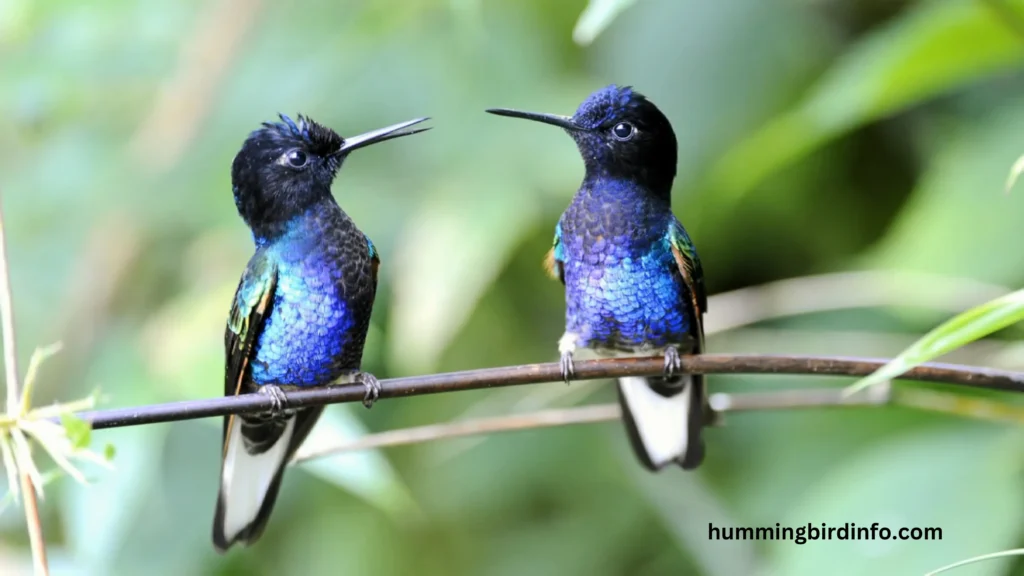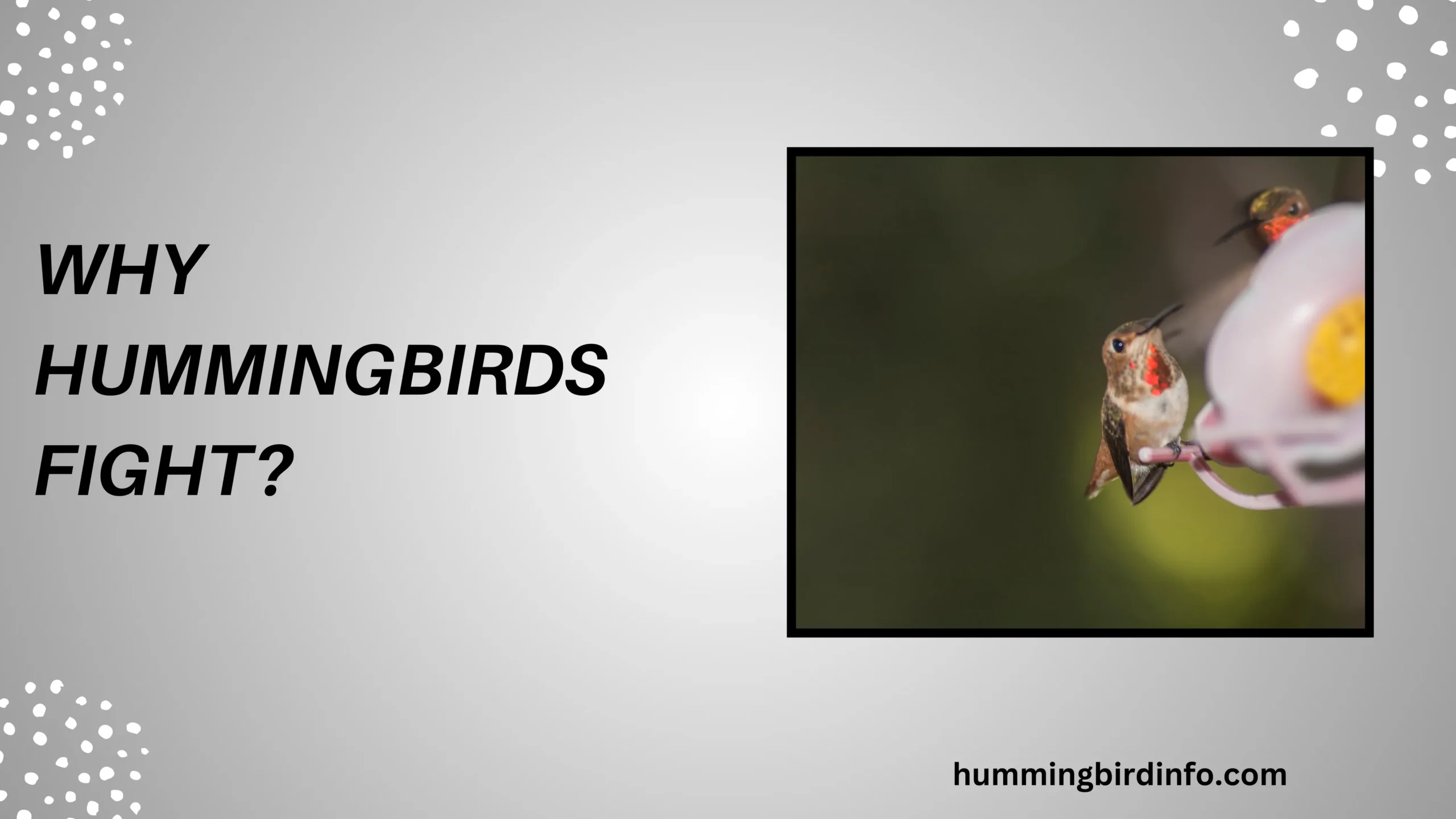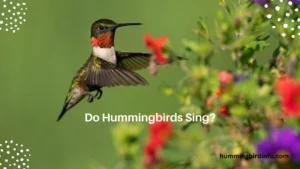Hummingbirds might be among the smallest birds on earth, but their behavior is anything but delicate. When two hummingbirds clash, their rapid wingbeats blur into a fierce aerial battle, full of buzzing sounds and sharp movements.
These tiny creatures, often admired for their beauty and grace, reveal a surprising side: intense aggression. Why do these miniature marvels fight with such passion?
Understanding why hummingbirds fight unlocks a deeper view into their world—where survival depends on defending precious resources and securing the chance to reproduce.
These conflicts are not random; they are shaped by the urgent need to claim territory, food, and mates. Learning about their fights offers fascinating insight into the survival strategies of these vibrant aviators.
This article dives into the core reasons behind hummingbird battles, exploring territorial disputes, food competition, mating rivalries, and the costs and consequences of their aggression.
By uncovering the motivations and methods of their fighting, we can appreciate the complex social and evolutionary forces driving these tiny titans to fight so fiercely.
Contents
- 0.1 The Prime Motivator: Fierce Territoriality
- 0.2 The Battle for Sweetness: Competition for Food
- 0.3 The Drive to Reproduce: Competition for Mates
- 0.4 The Arsenal of Aggression: Types of Fights
- 0.5 The Energetic Costs of Conflict
- 0.6 Factors Influencing Aggression
- 0.7 Evolutionary Implications of Fighting
- 0.8 Conclusion
- 1 FAQs
- 2 1. Why do hummingbirds fight so aggressively despite their small size?
- 3 2. Do hummingbirds fight year-round or only during breeding season?
- 4 3. Are both male and female hummingbirds aggressive?
- 5 4. How do hummingbirds avoid injury during fights?
- 6 5. Can hummingbirds share feeding territories peacefully?
- 7 6. What role do hormones play in hummingbird aggression?
The Prime Motivator: Fierce Territoriality
The heart of most hummingbird fights lies in territorial defense. These birds fiercely guard areas rich in nectar, their main energy source. Because hummingbirds have extremely high metabolic rates, they must eat almost constantly to survive.

Controlling a patch of flowers or feeders means securing a reliable supply of energy.
In ecology, this is known as economic defensibility—hummingbirds defend territories only when the benefits of exclusive access to resources outweigh the energy spent in defense. A territory overflowing with nectar is worth the fight, while poor patches are often abandoned.
Hummingbirds establish several territory types: feeding territories with abundant flowers, breeding territories that also provide safe nesting spots, and migration stopover territories to fuel their long journeys.
While some species are strictly territorial, others tolerate sharing resources depending on food abundance and the number of competitors.
The Battle for Sweetness: Competition for Food
Food is a frequent cause of hummingbird conflicts. Feeders, with their concentrated and predictable nectar, often become battlegrounds. Observers frequently see hummingbirds chasing rivals away with dizzying aerial displays and aggressive dives.
Natural flower patches are also fiercely contested, especially those producing high-quality nectar. Hummingbirds engage in two types of competition: scramble competition, where they try to consume nectar quickly, and contest competition, where they actively block or drive away rivals.
In crowded areas, dominance hierarchies can form, with dominant birds consistently winning access to the best feeding spots. These social rankings help regulate competition but often lead to repeated fights.
The Drive to Reproduce: Competition for Mates
Male hummingbirds are notorious for their aggressive behavior during mating season. They fight other males to gain access to females, often through spectacular aerial chases and confrontations. These battles are a display of strength and stamina, signaling fitness to potential mates.
Courtship is also a form of competition, with males performing elaborate flights, flashes of colorful feathers, and unique vocalizations to outshine rivals. Securing and defending a territory rich in nectar and attractive perches boosts a male’s chances of drawing female attention.
While less common, females also show aggression, especially near prime nesting sites or food resources necessary for raising their young. Competition among females ensures the best possible environment for their offspring.
The Arsenal of Aggression: Types of Fights
Hummingbird fights come in many forms. The most visible is the aerial chase, where one bird pursues another at high speed, often accompanied by loud buzzing sounds. Birds may also dive-bomb or strafe rivals, flying close enough to intimidate or strike.
Close combat involves bill jabbing and foot clashing, where birds physically attack each other with sharp beaks and claws. Vocalizations, including aggressive chirps and harsh calls, often accompany these battles.
Some fights last for extended periods, exhausting both opponents through repeated attacks and evasive maneuvers. These prolonged battles are a testament to the high stakes of resource defense.
The Energetic Costs of Conflict
Fighting is expensive for hummingbirds. Every chase, dive, and jab burns precious calories, making these battles energetically costly. Time spent fighting means less time feeding, risking an energy deficit that could threaten survival.
There is also a risk of injury. Despite their small size, bill strikes and collisions can cause damage, which could impair a bird’s ability to feed or escape predators. Thus, hummingbirds must balance the benefits of winning a fight against these risks.
Evolution favors those who manage this trade-off successfully—winning enough fights to access resources and mates without wasting excessive energy or risking serious harm.
Factors Influencing Aggression
Several factors shape how often and how fiercely hummingbirds fight. Scarce or highly concentrated resources trigger more aggression. In crowded habitats, competition is naturally higher, leading to more frequent conflicts.
Individual temperament plays a role too—some birds are naturally more aggressive. Hormones, particularly testosterone, increase aggression during breeding seasons. Birds also learn from experience, adjusting their fighting strategies based on past victories or defeats.
Evolutionary Implications of Fighting
Despite its costs, fighting plays a vital role in hummingbird survival and reproduction. Successfully defending territory means better access to food and mates, boosting reproductive success.
Fighting also acts as sexual selection, with females often choosing males who demonstrate strength and resource control. Over time, this shapes the evolution of territoriality, aggression, and mating displays in hummingbird populations.

Conclusion
Hummingbirds fight mainly to defend limited resources—nectar and mates—through fierce territorial behavior and aggressive displays. These battles reveal the intense competition underlying the seemingly peaceful world of these tiny birds.
Understanding their fighting sheds light on the ecological and evolutionary pressures that shape hummingbird behavior. These aerial skirmishes, despite their high energy costs, are vital strategies for survival and reproductive success.
In the end, the fierce battles of these miniature titans highlight a timeless truth: no matter their size, the drive to survive and reproduce fuels extraordinary acts of strength and courage.
FAQs
1. Why do hummingbirds fight so aggressively despite their small size?
Hummingbirds fight aggressively because their survival depends on defending limited resources like nectar and mates, which are crucial given their high energy needs.
2. Do hummingbirds fight year-round or only during breeding season?
Fighting occurs year-round but intensifies during breeding season when competition for mates and prime territories increases.
3. Are both male and female hummingbirds aggressive?
Males are typically more aggressive, especially over mates, but females can also fight, mainly around nesting sites or food resources.
4. How do hummingbirds avoid injury during fights?
They rely on quick aerial maneuvers and use displays and vocalizations to intimidate rather than cause serious harm, although injuries can still occur.
Some species tolerate shared feeding territories when resources are abundant, but many prefer exclusive control of rich nectar sources.
6. What role do hormones play in hummingbird aggression?
Hormones like testosterone increase aggression, particularly in males during breeding seasons, driving territorial and mating fights.








